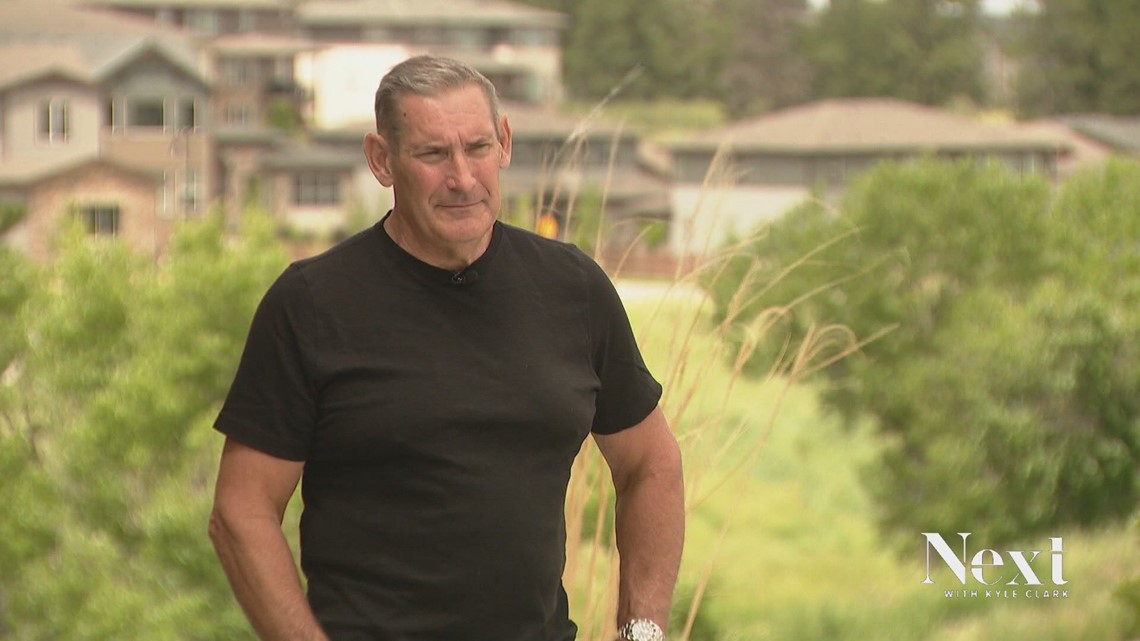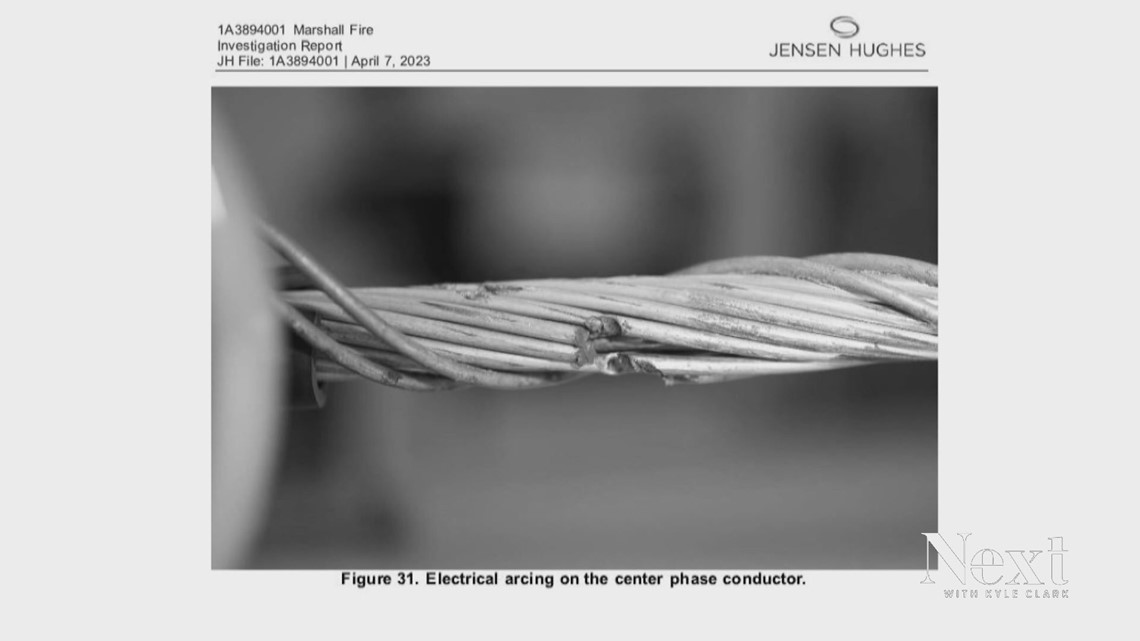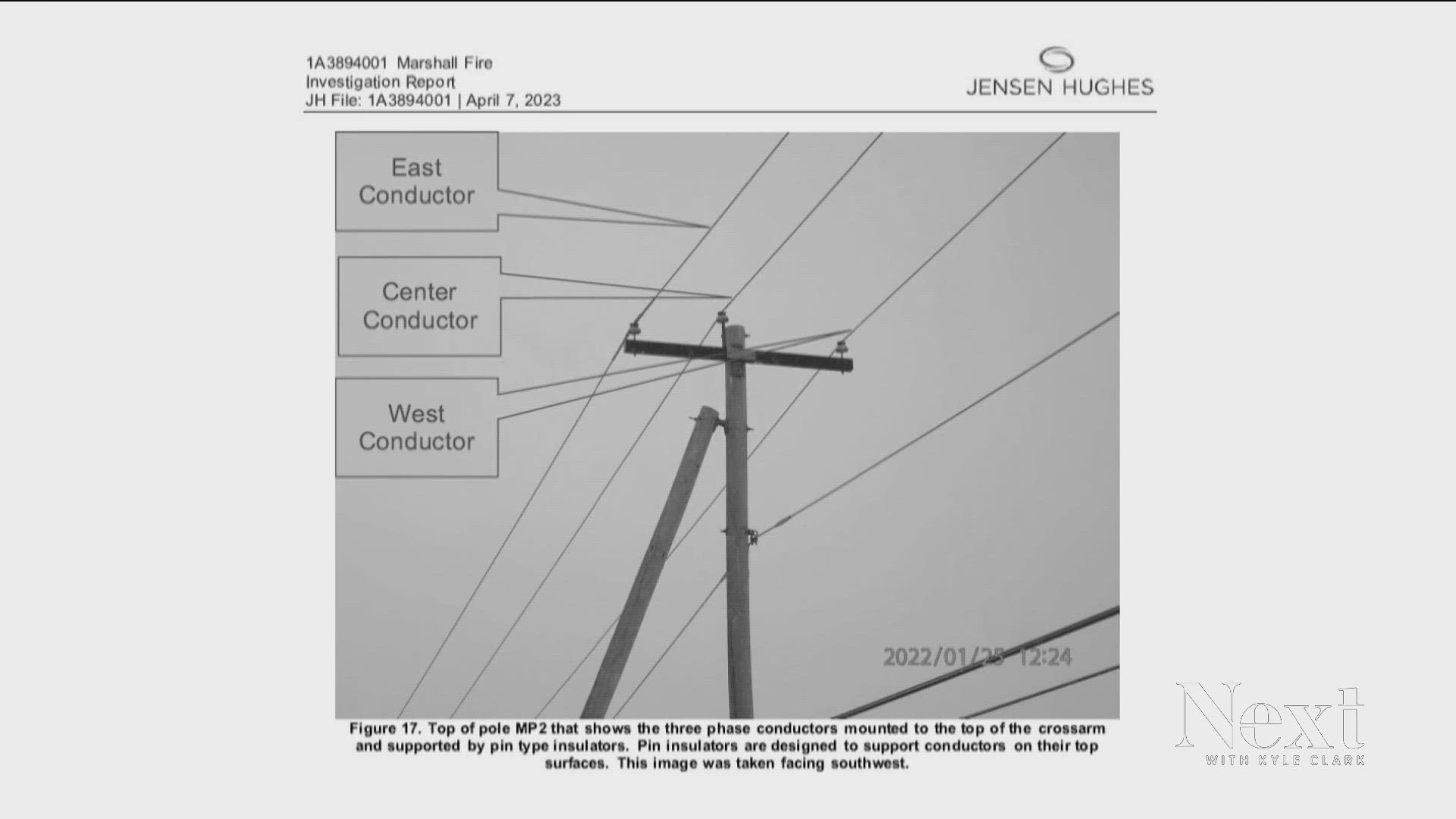DENVER — There are at least three lawsuits against Xcel Energy as a result of the Marshall Fire.
The investigation that concluded last month found two causes. The first was a fire that started on the Twelve Tribes property, followed by a second fire that was most likely from Xcel’s equipment.
“With a degree in forestry, I often get contacted for these because I can talk about the powerlines and the vegetation management and the wildland issues that arise,” electrical engineer Paul Way said.
Way was one of two authors of the Marshall Fire Electrical Engineering report that found that Xcel was most likely responsible for the second ignition point on Dec. 30, 2021.
“The physical evidence, and the photographic evidence that was obtained by the [Marshall Mesa trailhead] gate camera, is very compelling,” Way said. “The photographs from the gate camera show exactly when the fire was ignited, and it’s in the time when this line was jump roping.”


There are three powerlines, known as conductors, that go along Highway 93 near Highway 170.
Way concluded that the eastern-most conductor came loose from the insulator, and then the lashing wire meant to hold it in place, came in contact with the middle conductor, which caused arcing and hot aluminum particles to fall onto the vegetation below starting a fire.
“You saw in my report there’s a photograph of a powerline with a big gouge in it, that is an arc gouge and arcs produce hot particles. Hot particles are often capable of igniting susceptible fuel beds. And that’s what led me to my conclusions on a more probable than not basis,” Way said.


He could not conclude with 100% certainty that Xcel was to blame for that second ignition point, though he ruled out the coal seams in the area.
“Let’s make sure that you and others understand the difference between probable and possible. If you draw a graph between 100% and 0%, for me as an expert to give an opinion, I have to exceed the ‘more probable than not’ level, which is 51% confidence. Now, to say that the coal seam is possible, in my opinion, that is very near to 0% possible, but it’s not impossible,” Way said. “Monitoring after this incident showed that the temperatures never exceeded somewhere in the low-to-mid 100-degree Fahrenheit range. To ignite available fuels, it’s got to exceed 450 [degrees] Fahrenheit, and they never even got close. On a ‘more probable than not’ basis that’s not possible, which is why I eliminated that as a possible cause.”
Xcel disagreed that its equipment caused a second ignition point.
Way’s report referenced an Oct. 2022 presentation by Xcel to investigators before a cause was determined.
That presentation was Xcel explaining why its equipment did not ignite the second fire.
Next with Kyle Clark does not have the Xcel presentation, but we requested and received a Boulder County Sheriff’s Deputy’s body camera that recorded audio of that meeting.
"I don’t think we can tell you what we think did start the second fire, but we can tell you why we think Xcel’s equipment did not,” said an Xcel lawyer.


Part of Xcel's explanation was that the arcing found on the center conductor was not from the day of the Marshall Fire.
“There's references to potential arcing signs on the middle phase. We think that’s a[n] older event,” an Xcel representative said.
When someone asked if Xcel had looked at the historical data to determine when that older event occurred, Xcel did not know.
"No, and I think that's something we can look into, but I think that would be very difficult to do,” an Xcel representative said.
“They said they hadn’t found any evidence, I believe, of electrical arcing that could have ignited the fire, and of course, I believe that to be just false,” Way said. “I found it to be somewhat misleading. Because they did not talk about the arcing and the lashing and the center phase conductor. They didn’t talk about, really, the behavior of the recloser in any detail that was compelling. And they, furthermore, left out a lot of facts that were available to them at that time.”
A recloser is like a circuit breaker, meant to trip a localized area if it detects a fault.
According to Way’s report, the recloser tripped and went back into an active position about two-and-a-half hours before the second ignition point.
“This particular recloser was set for ten-shot; open-closed, open-closed, open-closed, 10 times. Which is a factory default setting,” Way said. “It would take 800 amps to cause the recloser to open, which is really high. In this case it was, probably, in the order of tens of amps that flowed through the lashing to the center phase conductor which wouldn’t have ever caused the recloser to operate.”
Way had to sidestep a bit when asked if the recloser settings were set too high.
“That is a discussion that I will be having with the private insurance investigation team and the litigators for the insurance companies. So, that’s probably the case. It could have been set a lot lower,” Way said.
Had the recloser tripped the line for an extended period of time during the high wind event on Dec. 30, 2021, even if the lashing wire from one line hit the other, that would not have been able to start a fire.
“If the recloser is open, there wouldn’t have been voltage or current in the line and any contact, incidental, between the lashing and the center phase wouldn’t have affected to create an arc particle,” Way said.
His report detailed that California has set standards, which are not widely adopted, that require reclosers to be more sensitive, particularly when there is high fire danger.
“Utilities are in a no-win. If they turn off power to prevent a fire, and the bad weather doesn’t occur, well, then they get criticized. If they don’t turn off and the power stays on, and a fire occurs, then they’re in trouble for that. So, in some ways it’s a no-win,” Way said.
SUGGESTED VIDEOS: Full Episodes of Next with Kyle Clark

